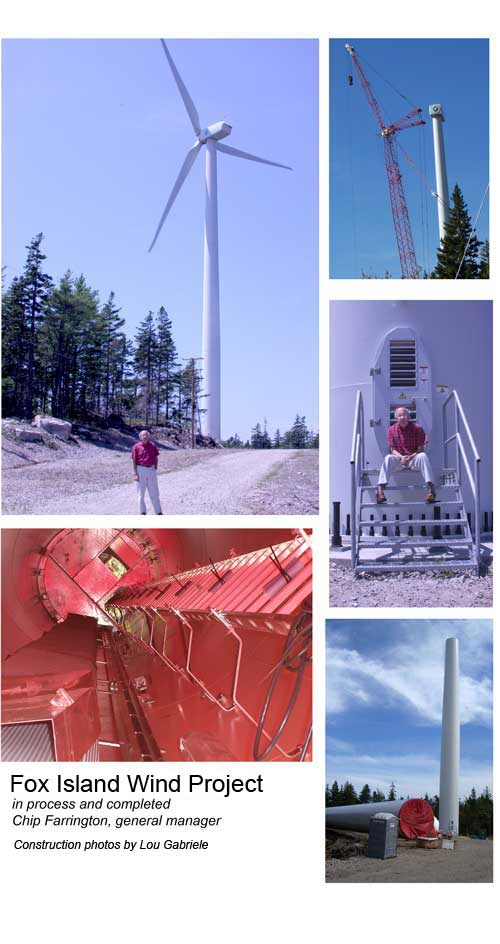Dr. George Baker, a seasonal resident of Frenchboro Island and a Harvard Business School professor, was engaged to do a preliminary economic analysis and create a financial plan. The Coop then entered the feasibility stage, which included an engineering study and an economic strategy. In July 2008 the ratepayers on both Vinalhaven and North Haven voted overwhelmingly 382 to 5 in favor of the project.
Getting the large turbines and blades over to the island on barges was no easy task and getting them from the shore to the site via narrow, winding roads proved very difficult - however, not impossible, as construction commenced on June 8, 2009. At the same time it was discovered that upgrades to the islands' main substation were needed and a race to the finish line ensued. The substation was ready to go two days before the completion of the three towers and a grid tie-in took place in October. General Electric begin the commissioning process for the turbines in November and Fox Islands Wind generated its first kilowatts during its testing. GE trained utility Lineworkers Loren Bunker and Joe Bickford in the operation and maintenance of the units.
Sixty percent of the wind power stays on the island and 40 percent is sent via cable to ISO New England. The electric rates on the island have been reduced by 15 to 20 percent and residents are highly supportive of the Fox Island Wind.
"The hardest part was getting started," said Farrington. "The feasibility of the project had many aspects that needed to be explored but it was all challenging and worthwhile."
